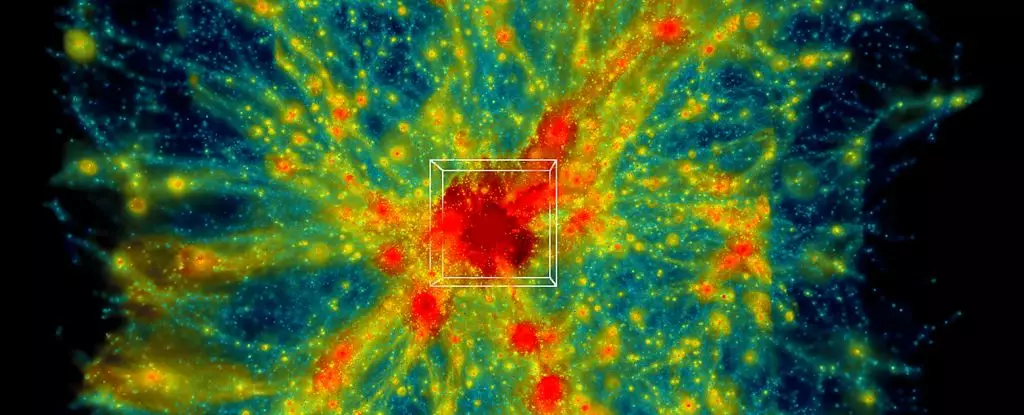In a groundbreaking achievement, researchers at the Oak Ridge National Laboratory in the United States have executed the most extensive astrophysical simulation to date, titled ExaSky. Utilizing the cutting-edge Frontier supercomputer, which operates with an astonishing 9,000 computing nodes, this simulation explores a staggering volume of the expanding universe—31 billion cubic megaparsecs. This pivotal work stands to significantly enhance our comprehension of the Universe’s development, contributing invaluable insights into the elusive realms of dark matter and cosmic evolution.
At the core of this monumental simulation lies the investigation into the two fundamental components of the Universe: dark matter and conventional matter, or atomic matter. According to physicist Salman Habib, who led the initiative at Argonne National Laboratory, the study of these components is essential for deciphering the cosmic narrative. Dark matter, which is believed to interact solely through gravitational forces, only reveals its secrets when it intertwines with visible matter. The ExaSky project aims to unravel the complexities of gravity, hot gases, star formation, black holes, and galaxy births by conducting cosmological hydrodynamics simulations, often likened to an astrophysical “kitchen sink.”
Navigating the vastness of space is an endeavor that also requires venturing through time. By scrutinizing light that has traversed billions of years to reach us, scientists are piecing together a narrative about the Universe’s evolution. However, the natural progression of cosmic structures occurs across immense spans of time, often eluding direct observation. Thus, simulations have emerged as a vital resource in astrophysics. They enable researchers to manipulate cosmic timelines, accelerate or rewind scenarios, and explore the Universe’s intricacies as if they were omnipotent beings controlling cosmic events. Yet, it’s crucial to acknowledge that while this may sound deceptively simple, the underlying mathematics and the sheer complexity of space make the task incredibly labor-intensive and challenging.
The Challenges Faced
Previous endeavors in cosmic simulations were constricted by the limitations of computational capacity and the intrinsic complexities of hydrodynamics. Many simulations had to forgo key variables for the sake of efficiency, ultimately limiting their accuracy and comprehensiveness. Habib underscores the strides made in recent years, stating that simulations of substantial portions of the Universe, particularly those observed by major telescopes like the Rubin Observatory, were only dreamed of in the past. Until recently, it was nearly impossible to model such large areas without reducing the simulation to a gravity-only framework, forsaking a multitude of influential factors.
The Path to the ExaSky Simulation
The completion of the ExaSky simulation involved extensive refining of algorithms and the development of the Hardware/Hybrid Accelerated Cosmology Code crucial for its execution. As the Frontier supercomputer was upgraded to become the fastest of its kind globally, the researchers were positioned to accomplish this ambitious task, stretching the boundaries of what was previously conceivable in astrophysical simulations.
The Implications and Future Insights
Though the ExaSky simulation represents just a mere 0.001 percent of the entire simulated volume, the potential implications are staggering. As Bronson Messer, an astrophysicist at Oak Ridge National Laboratory, articulates, the sheer size of the simulated domain will facilitate direct comparisons with contemporary astronomical survey observations, rejuvenated by the capabilities of exascale computing. The astronomical community anticipates an avalanche of groundbreaking findings, paving the way for deeper understanding of cosmic phenomena and the dark enigmas that inhabit our Universe.
The ExaSky project illustrates not just a remarkable technical achievement but also an evolution in our pursuit of cosmic knowledge. It represents a leap forward in how we understand the intricate tapestry of the Universe and points toward a future where the mysteries of dark matter and cosmic expansion may become clearer than ever before. Such advancements mark not only the ingenuity of human inquiry but also our unquenchable thirst for understanding the very fabric of the cosmos.

